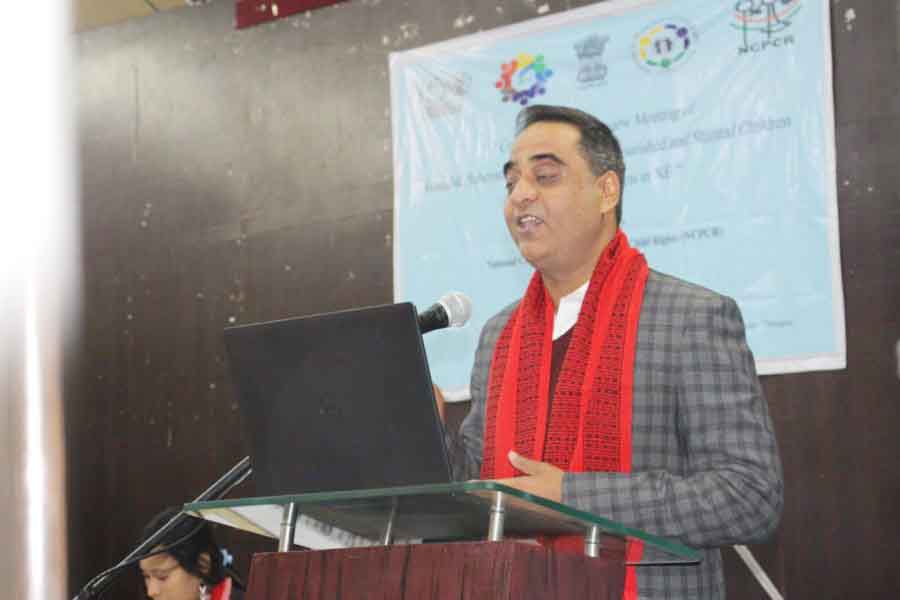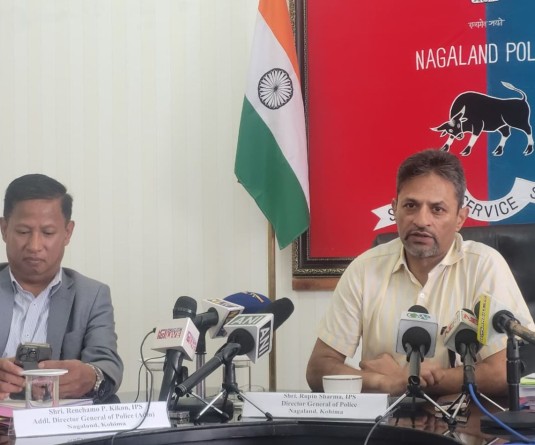Meeting assesses available schemes for malnourished children in Dimapur

Anoop Khinchi, IAS, Deputy Commissioner, Dimapur.
Dimapur, January 22 (MExN): Realizing the pivotal roles of Integrated Child Development Services (ICDS) Scheme, Food Security Act, Mid-Day Meal and Poshan Abhiyaan in the overall development of the children, one-day review meeting cum consultation on ‘available schemes and services for malnourished and stunted children in high prevalent districts of Nagaland’ was organised by National Commission for Protection of Child Rights (NCPCR) in collaboration with Nagaland Commission for Protection of Child Rights in Dimapur on January 21.
A press release received here stated that the main objective of the district level review meeting was to assess available schemes and polices for malnourished and stunted children in Dimapur district, to review the implementation of ICDS, Mid-Day Meal, Poshan Abhiyaan and Supplementary Nutrition programmes in the District; to discuss the challenges in effective delivery of nutrition services; to assess the gaps in availability of government schemes to the children.
The programme was graced by Awan Konyak, Chairperson, State Commission for Protection of Child Rights, along with Member, SCPCR, Nagaland, Rothihu Tetseo, NPS, Commissioner of Police, Dimapur; Anoop Khinchi, IAS, Deputy Commissioner, Dimapur and Sudip Chakrabortay, Consultant, North East Cell, National Commission for Protection of Child Rights.
Dr Obed, District Dimapur gave a brief presentation on “Malnutrition schemes and preventive policy.” Presentations were made by Bonathung Ngullie, CDPO (R) District Social Welfare Department, Dimapur, Nagaland on “Available Social Welfare Schemes to address the issue of nutrition in the District and their implementation at different level.”
Kitoshi Zhimomi, JEO-Cooridanator MDM presented on “Role of Mid Day Meal service in ensuring nutrition to children & Gaps and Challenges in effective implementation of MDM.”
Imsutola Jamir, Dietitian, Eden Medical Center highlighted on “Malnutrition and stunsting among children-innovative methods and techniques and feeding practices to ensure optimum nutrition to children.”
Health report of children in NE
According to the India Health Report Nutrition 2015 (Transforming Nutrition 2015) jointly prepared by Public Health Foundation of India (PHFI) and the International Food Policy Research Institute (IFPRI) and released by the Union Minister, Health and Family Welfare, JP Nadda, 42.9% of the total children under the age of five in Meghalaya are stunted, while 40.6 children in Assam are found to be undersized. The rates are above the national average rate of 38.7%.
Mizoram has recorded a 13 percentage-point decline in stunting with 26.9 percent children under the age of five are found to be stunted in 2014 against 39.8 in 2006.
Stunting is inadequate height for age, which is indicative of chronic or cumulative nutritional deprivation in early childhood.
The stunting rate in Manipur is 33.2%, Tripura 31%, Nagaland 29.1%, Arunachal Pradesh 28.4 percent and Sikkim 28%. Arunachal Pradesh recorded a number of wasted children (17%) than other states of the Northeast.
Wasting is an inadequate weight for height, which points to acute or short term malnutrition.
The national average of wasted children is 19.8%. Mizoram recorded 14.3% in wasting rate, Meghalaya 13.1, Nagaland childhood and adolescence are periods of continuous growth and development. The most rational, sustainable and long-term solution to the problem of malnutrition is ensuring availability, accessibility and consumption of adequate amounts of foods.




